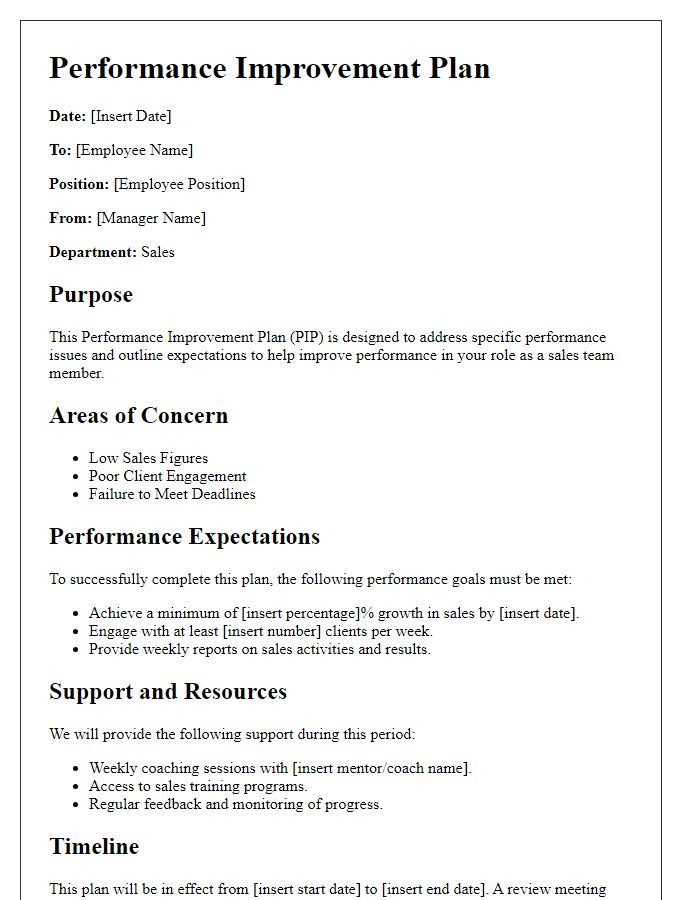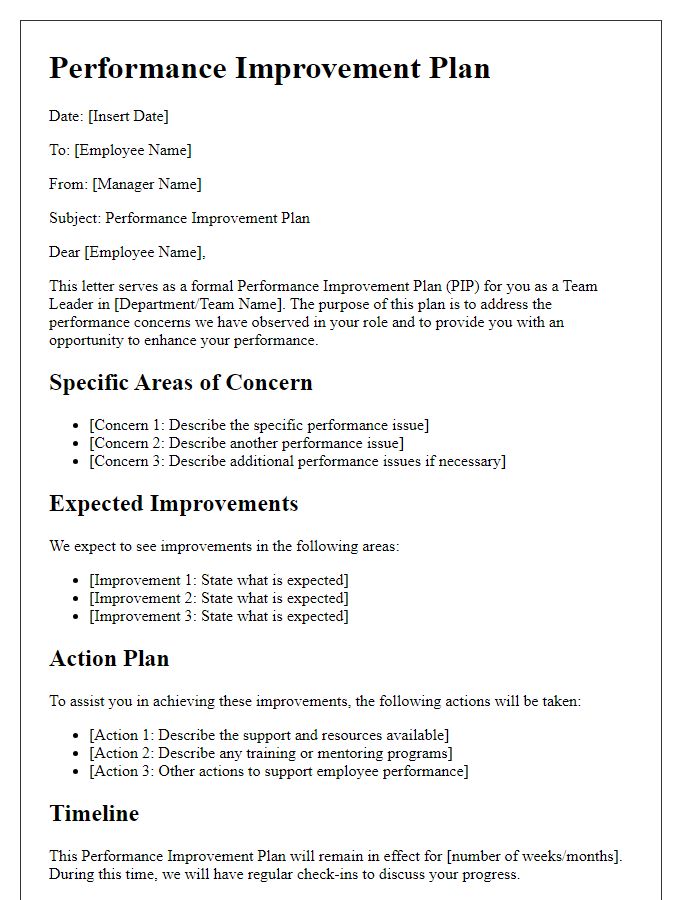Are you looking for a way to navigate the sensitive yet crucial process of a performance improvement plan? It's essential to approach the topic with care while still being straightforward, as it can significantly impact employee growth and morale. A well-structured letter can provide clarity on expectations and the support available for improvement. Let's dive into how to craft an effective performance improvement plan letter that fosters open communication and encourages success!

Employee Information and Role
Employee information consists of details that describe the individual in a work setting, such as name, job title, and department, crucial for tracking performance metrics. The role outlines specific responsibilities within an organization, highlighting key performance indicators (KPIs) that dictate success criteria. Identifying the employee's position, such as Sales Representative or Software Engineer, alongside the department like Sales or IT, aids in customizing the performance improvement strategy effectively. Additionally, including tenure information, such as the start date and previous evaluations, provides context for understanding the employee's development over time within the company structure.
Performance Issues and Expectations
Performance improvement plans (PIPs) outline specific performance issues requiring attention and establish clear expectations for improvement. Key performance indicators (KPIs) include measurable outcomes, timelines, and required behaviors related to job responsibilities. Regular feedback sessions, often scheduled weekly or bi-weekly, serve to assess progress, clarify objectives, and provide the employee an opportunity to discuss challenges. The duration of the PIP typically spans 30 to 90 days, depending on the organization's policies. Documentation of meetings and progress helps ensure transparency and accountability throughout the process, ultimately aiming to foster employee development and enhance overall team performance.
Specific Goals and Deadlines
A performance improvement plan (PIP) outlines specific goals and deadlines for employee development and assessment. Goals might include enhancing sales figures, which could target a 15% increase over the next quarter, or improving customer service ratings, aiming for an 80% satisfaction score within two months. Deadlines for these objectives should be clearly defined, such as completing a customer service training program by the end of the first month or conducting weekly check-ins to track progress. The plan should also identify key performance indicators (KPIs) to measure success, such as monthly sales reports, customer feedback surveys, or peer evaluations, ensuring accountability and a clear path toward improvement.
Support and Resources Available
A comprehensive performance improvement plan outlines available support and resources for employees aiming to enhance their work output. Regular check-ins with supervisors can foster open communication about goals and challenges. Access to training programs, both online and onsite, such as skill-building workshops or leadership courses, equips employees with necessary tools. Employee assistance programs (EAPs) provide confidential counseling services to address personal or professional challenges impacting performance. Additionally, mentorship opportunities can connect less experienced staff with seasoned professionals to offer guidance and encouragement. Well-being resources, including stress management sessions and wellness programs, also contribute to a supportive work environment, ultimately promoting growth and improvement in performance.
Consequences of Non-Improvement
Consequences of non-improvement in job performance can significantly impact both individual career trajectories and overall team dynamics. Consistent failure to meet established performance benchmarks, which may include sales targets or project deadlines, can lead to formal disciplinary actions according to company policy. An employee may face a performance evaluation, resulting in potential demotion or loss of bonuses, impacting financial stability. Additionally, persistent underperformance can damage the reputation within the workplace, making future advancement opportunities scarce. The collective morale of the team can diminish, as high-performing colleagues may feel burdened by additional responsibilities and frustration toward unmet expectations. Ultimately, continuous non-improvement may result in termination of employment, particularly if the lack of progress contravenes the values and goals set forth by the organization.
Letter Template For Performance Improvement Plan Samples
Letter template of Performance Improvement Plan for Employee Development

Letter template of Performance Improvement Plan for Administrative Staff

Letter template of Performance Improvement Plan for Customer Service Representatives

Letter template of Performance Improvement Plan for Marketing Department

Letter template of Performance Improvement Plan for Technical Support Staff









Comments